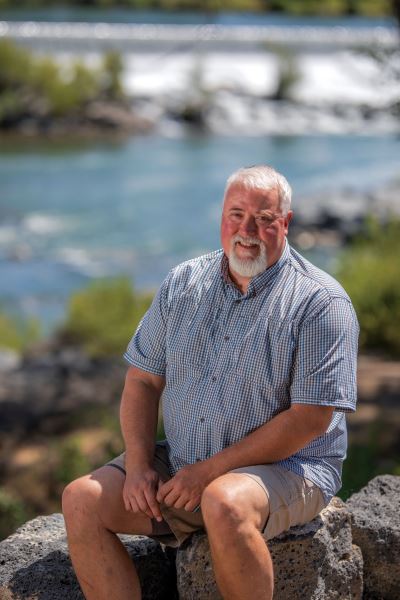
There’s a line from Norman Maclean’s A River Runs Through It where the author’s younger brother, Paul Maclean, voices his intention to someday become a “professional fly fisherman.” The story is set in early 20th century Montana, but it could just as well take place along the trout-filled rivers of Colorado. That’s where, decades later, a young aspiring angler named Chris Hunt would discover his own passion for casting flies, and later combine it with a vocation in penning stories.
‘Coming to Idaho, it reminded me a lot of where I grew up in Colorado. Not so many people, kind of undiscovered,” Hunt told us last summer at the falls by River Parkway. “You look at the South Fork, Henry’s Fork, and the Teton – these are tremendous resources, especially when it comes to the wealth of fly-fishing. You could talk about Southwestern Montana with Yellowstone and the Madison River, but this place is better. People just don’t know it. Plus, you can actually afford to live here.”
Hunt moved to eastern Idaho from northern California in 1999. He took a job in Pocatello as a reporter for the Idaho State Journal, where he went on to serve as Editor.
“While there, I had written a guide book for the paper on fishing the small streams of Idaho, but even before that, trout were always a fascinating subject for me,” he said. “They’re like the canary in the coal mine for our watersheds.”
As his recreational and vocational interests further aligned, Hunt says he felt compelled to do a lot more fishing – and shout more about it from the rooftops, too. Hunt left the paper in 2005 to go work for Trout Unlimited, where he now serves as the organization’s national digital media director.
The opportunity has been a dream job, to say the least.
“My role is to promote TU’s organizational work in helping to protect public lands throughout the country,” he said. “What people don’t realize is that these national forests and BLM lands – they’re not government land. They’re your land, and the government is simply your property manager.”
Representing a conservation group like TU is “working in politics, sort of, but it’s also just working with people regardless of politics,” he added. “We live in a fairly conservative place. It’s not just about catering to these ‘liberals’ or “granola” types. You have to get past that, and talk to people who camp and ride ATVs, or hike or fish or hunt. They’re like, ‘Yeah, I don’t want to lose any of this. I want to keep it like it is.’ That was our message.”
While the mission of TU draws support from people of all backgrounds, the organization’s heart and soul is about fly fishing.
“For TU members, that is their first love. The beauty of it is that once you come to love the craft, you have to come to love and respect the places that you visit,” Hunt said.
For Hunt personally, his latest confluence of work and play has taken form in “Catching Yellowstone’s Wild Trout,” a 160-page exploration of angling opportunities in the nation’s first national park.
“It’s part fly-fishing history, part guide,” he said. “I’ve been fishing Yellowstone for 20 years. The experiences are unique, to say the least. Where else in the world can you fish while a herd of bison cross the river below you, as Elk bugle in the distance?”
One of the more interesting aspects of the book is Hunt’s exploration of how certain fish species got there in the first place. For example, most visiting anglers may not realize that Yellowstone harbors two distinct native sub-species of cutthroat trout, as well as native Arctic grayling found in the headwaters of the Missouri River. Even more interesting is the cast of imported species such as resident brown trout that were introduced from Scotland and Germany. As a result, there is now a species of brown that can only be found in the Gibbon, Firehole and Madison rivers.
“When I was a kid growing up in Colorado, Yellowstone just seemed like a world away. Now it’s just a part of my life.” Hunt fishes the park’s various fisheries at least half a dozen times per year, as well as waters all around the region.
Are there any mixed feelings about giving up all those special fishing spots for anyone toting a rod and reel?
Hunt’s philosophy seems to be that more information just brings more opportunity, and it’s the angling opportunities that bring in the fly shops, the guides, the outfitters, the gas stations and the restaurants.
“You put that all together and boom, now you’ve got a renewable economy,” he said. “Just take care of the land and the water, and we’re all in good shape. That’s been the focus of my work for the past 15 years. I love it.”
Click here to read more of the November issue.